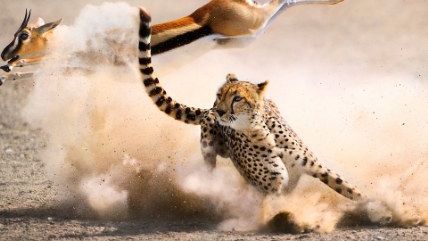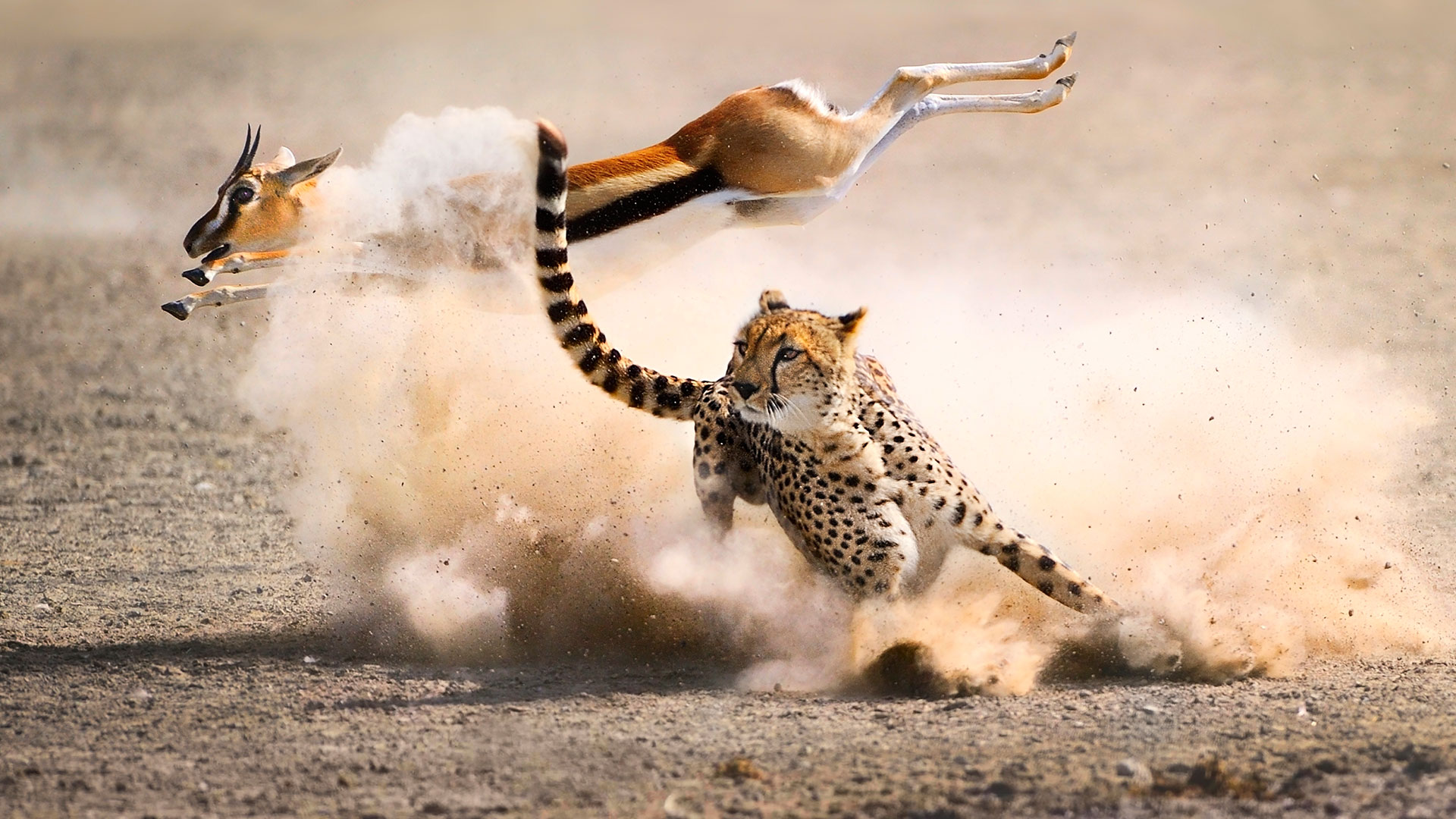It's Hard Out There for a Predator
The Hunt shows the difficult lives of the carnivores of the animal kingdom.


The Hunt. BBC America. Sunday, July 3, 9 p.m.
Based on the approximately 1.2 zillion bugs-and-bunnies-avengers with Twitter and Facebook accounts who wanted to disembowel and eat a Minnesota hunter last year for killing Zimbabwe's saintly Cecil the Lion last year, I'm guessing an eight-week documentary revealing that the animal kingdom is in large part composed of creatures who are neither pacifists nor vegans is going to come as a shocking and even traumatic surprise.
For misanthropes who still sport "NUKE THE WHALES" buttons from their last Fleshapoids concert, though, BBC's The Hunt is likely to be a sublime experience. Orcas inflicting mass infanticide on humpbacks! South African falcons gorging on winged Indian termites! Ethiopian wolves ravaging giant mole rats! Nature in all its maniacal blood-drinking glory!
To be, however reluctantly, fair, The Hunt is not really a Cute Furry Faces of Death snuff reel. Actual kills are few, far between and usually discreetly shielded from the camera. (The single exception: Insect victims apparently fall outside the Documentary Film Geneva Code, possibly because of all that unpleasantness in New Mexico a few years back, and their decapitations and disembowelments go uncensored and unmourned.)
The lack of bloody debauchery is partly a matter of taste, but even more a reflection of stone reality: Rapaciousness is hard work. Contrary to the example of my cat Melissa, the terror of tuna cans everywhere, leopards muff five of every six attacks, African crocodiles nine of 10, and lots of other carnivores are even more inept. "Most predators fail most of the time," observes The Hunt's narrator, David Attenborough. "It's what makes them the hardest-working animals on the planet."
Thus The Hunt is more of a high-stakes chess match, albeit one featuring spectacularly photographed athletic grace. Its preternaturally omniscient cameras document the shifting strategies employed by both predators and prey.
Among the most fascinating sequences in the opening episode is the lengthy pursuit—at speeds of up to 40 mph—of a wildebeest by Zambian wild dogs. While running, the dogs, with their greater stamina, have the advantage; but the wildebeest has a 10 to 1 weight advantage that turns the tables when they square off. If two wildebeests join together, protecting one another's backs, they are practically invincible; but sometimes their herds are inexplicably apathetic and simply stand there watching.
You don't have to be some kind of anthropomorphizing Disney nut to find the end game of these combats saddening and even a little scary. But it's also useful to remember that the predator, just as much as the prey, is fighting for survival; if he doesn't kill, he doesn't eat, and he won't live long. When The Hunt's cameras catch a glimpse of jaguar cubs watching their mother's hapless pursuit of a defiantly speedy gazelle, their expressions look pensive. Perhaps they know that 90 percent of jaguar cubs don't make it to their second birthday. And perhaps they're thinking that a zoo doesn't sound so bad.


Show Comments (33)